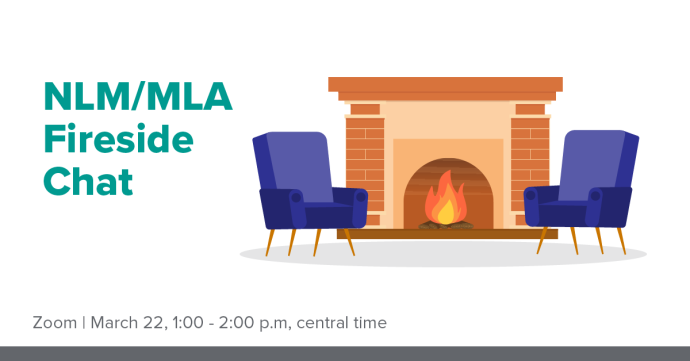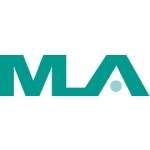Mark your calendars now for the March 22, 2023, joint Fireside Chat between MLA and NLM leaders! Join MLA President Shannon Jones, AHIP, FMLA; MLA President-elect Amy Blevins; and NLM Associate Director for Library Operations Dianne Babski for a discussion of collaboration between MLA and NLM.
This article provides some background in advance of the conversation.
Submit a question ahead of the Fireside Chat.
The National Library of Medicine (NLM) and the Medical Library Association (MLA) have a longstanding collaborative relationship to improve public health and advance medical progress by providing access to biomedical and health information resources for researchers, healthcare professionals, and the public.
Founded in 1836 as the Library of the Surgeon General's Office, NLM became a part of the US Public Health Service in 1956. Past MLA President Janet Doe testified before Congress on behalf of the bill to transfer the library to civilian control and later to secure its grant-making authority.
In the 1960’s MLA members engaged in hearings and letter campaigns that led to passage of the Medical Library Assistance Act (MLAA) of 1965. The MLAA increased NLM’s stature within the US Congress, had a major impact on the growth of medical libraries, improved collections, upgraded facilities, and trained medical librarians. It also established the Regional Medical Library Network (now the Network of the National Library of Medicine).
Separate Roles, Common Objectives
MLA executes its mission to foster excellence in the professional practice and leadership of health sciences library and information professionals by providing volunteerism and services in continuing education, networking, information sharing, recognitions, and in amplifying the voice of the profession. As a 501c(3) non-profit organization, MLA is limited in what it is allowed to do: MLA can “inform” but not “lobby”; MLA can take a stance on an issue that relates to its mission but it cannot support or be against a political party or candidate.
The National Library of Medicine (NLM) is one of the 27 Institutes at the National Institutes of Health. NLM is a global leader in biomedical informatics and computational health data science and the world’s largest biomedical library. NLM’s legislative mandate is to support the essential work of acquiring, organizing, preserving, and disseminating biomedical information. NLM provides public access to this information 24 hours a day, 7 days a week.
Together, MLA and NLM leverage each other’s roles and strengths and collaborate on multiple initiatives for the benefit of health information professionals and their institutions, stakeholders, and communities. Main areas of collaboration are information sharing, continuing education, and library services.
Information Sharing
MLA has the objective to maximize the opportunities for health information professionals to learn about NLM programs and initiatives through:
- annual conference and related sessions (NNLM Day, NLM Update, PubMed Update, contributed content, and exhibit connections);
- joint selection and alternate hosting of the annual Joseph Leiter NLM/MLA Lectureship;
- quarterly meetings between NLM and MLA leaders; and
- amplification of NLM and NNLM messages and opportunities through MLAConnect.
Continuing Education
MLA and NLM collaborate to provide health information professionals with responsive and impactful continuing education. Key initiatives include:
- MLA Competencies for Lifelong Learning and Professional Success. While MLA owns the responsibility for defining professional competencies, it received $16,500 in grant support from the NNLM/SEA in 2016 to draft and finalize the competencies before publication in 2017.
- Curriculum development. Four topic specializations are designed to help health information professionals and others develop a level of expertise in a specific health information field— possible due to both financial support and guidance from NNLM regions. Almost 2,500 certificates have been issued, many with application funding support from NNLM regions.
- Learning Management System (LMS). Since its launch in 2017, NLM regions have supported MLA’s LMS annually, with total funding of $131,000. MLA provides a branded NNLM catalog of courses (currently 140 courses approved for MLA CE credit) with more than half of the 55,000 course completions since 2017 being NNLM courses. This collaboration enables those with limited funds to find and gain MLA CE credits without charge in an integrated platform that supports a joint educational mission.
Library Services
MLA and NLM collaborate to provide services for libraries’ inter-library loans (ILLs) between NLM’s DOCLINE and MLA’s Electronic Funds Transfer System (EFTS). DOCLINE matches borrowers with lenders and provides EFTS with the transaction information between two libraries who subscribe to EFTS. For lenders using the auto-approval feature, the process is entirely automated, saving administrative time.
In 2022, libraries using EFTS exchanged 121,641 ILL transactions.
Find out more: download a more extensive view of the NLM and MLA collaboration from MLANET (PDF).




